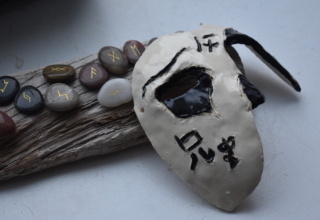
Identify
Following a positive assessment philosophy and a non-deficit helping model, we encourage coaches to assist their clients by first helping them develop accurate self-awareness by identifying their strengths. Which EI dimensions and PERL skills do they claim as strengths that contribute to their current levels of success and performance? Note that this discussion can include other kinds of skills as well, and the kinds of skills being discussed will depend on the context (i.e., purpose) of the coaching relationship. Record in some way the client’s identified strengths. Next, move the discussion to opportunities for growth. Co-discover with the client the skill areas or dimensions they would like to work to improve. Record those as well before moving to the next step.
The emotional mind’s job is to protect the self and it thinks critically quickly and automatically to do so. In the Identify step we introduce constructive thinking back into the equation to compliment critical thinking, thereby regaining some equilibrium between the three systems.
Understand
To engender self-knowledge we focus on developing personal understanding about the skills being discussed. A good way to accomplish this task is to encourage the client to integrate and synthesize the skills by focusing on active imagination to develop EI (Figure 2, Panel D). Again, we begin with strengths. Ask the client to imagine and explain how a strength identified in the previous step helps them with their current levels of performance. You might ask them to describe a situation where they used the skill and then pursue the conversation to increase the granularity of the client’s mental picture of using the skill. What behaviors were involved? How did their skilled behaviors make others feel? What feelings did they experience as a result of using the skill? When appropriate, shift the conversation back to one of the skills the client identified as an opportunity for growth. Follow the same process to assist the client in imagining how developing that skill will enhance their current levels of performance. It may be necessary to help the client find words to articulate this aspect of the conversation because they may not yet understand the identified opportunity for growth other than seeing it as a deficit. Whenever possible, encourage the client to do most of the talking.
Learn
In the Learn step the focus shifts to self-development. Transition from Understand to Learn by assisting the client to create an action learning plan that will be followed to develop the identified growth opportunity. The three essential components of an action learning plan include (a) the identification of one or more specific examples from each of the three ways (active imagination, guided mentoring, & self-directed coaching) of developing PERL skills, (b) a timeline with periodic progress checks for accountability, and (c) a business case or actual instance where the client will develop a plan or project to apply the new skill. For guided mentoring, the client (assisted by the coach if necessary) should identify a person who can serve as a mentor in the development of that specific skill. When appropriate (i.e., the coach is skilled in that area and mentoring is included in the coaching agreement), the coach may be identified to serve in this capacity.
Apply/Model
The business case or project can be a wonderful reinforcing experience for the development and use of the identified skill. As our colleague and friend Margo Murray has reminded us, PERL skills can be understood and acknowledged as important, and we can still not use them as often or as well as we would like. The integrated and sequential ELS is designed to lead coaches and clients to first apply PERL skills. Then, moving the skill from the conscious to the unconscious, the goal is to model the skill daily and in complex situations.
1K Club















